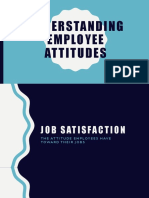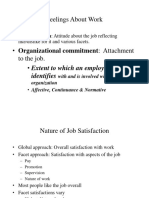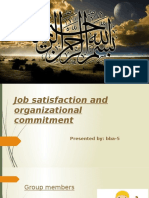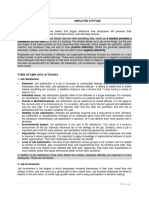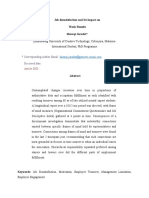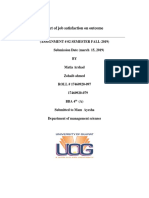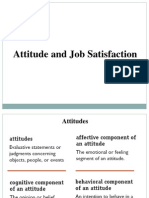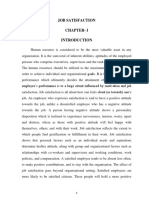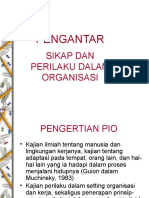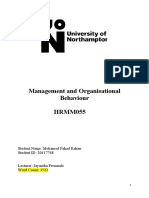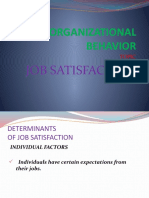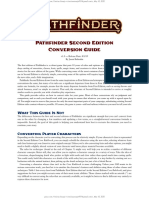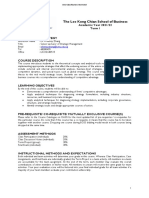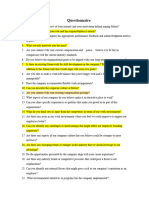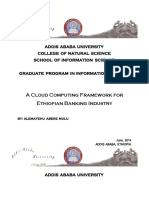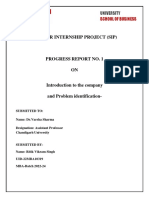0% found this document useful (0 votes)
170 views4 pagesJob Satisfaction & Commitment Metrics
This document discusses methods for measuring job satisfaction and organizational commitment. It describes several commonly used standardized inventories for assessing job satisfaction, including the Faces Scale, Job Descriptive Index, Minnesota Satisfaction Questionnaire, and Job in General Scale. It also outlines three types of organizational commitment: affective, continuance, and normative. The document then explores consequences of job dissatisfaction such as absenteeism, turnover, and counterproductive behaviors aimed at individuals or the organization. It provides recommendations for increasing attendance and reducing turnover through incentives, clear policies, reducing stress, and meeting employee needs.
Uploaded by
Denise Renee FailangaCopyright
© © All Rights Reserved
We take content rights seriously. If you suspect this is your content, claim it here.
Available Formats
Download as PDF, TXT or read online on Scribd
0% found this document useful (0 votes)
170 views4 pagesJob Satisfaction & Commitment Metrics
This document discusses methods for measuring job satisfaction and organizational commitment. It describes several commonly used standardized inventories for assessing job satisfaction, including the Faces Scale, Job Descriptive Index, Minnesota Satisfaction Questionnaire, and Job in General Scale. It also outlines three types of organizational commitment: affective, continuance, and normative. The document then explores consequences of job dissatisfaction such as absenteeism, turnover, and counterproductive behaviors aimed at individuals or the organization. It provides recommendations for increasing attendance and reducing turnover through incentives, clear policies, reducing stress, and meeting employee needs.
Uploaded by
Denise Renee FailangaCopyright
© © All Rights Reserved
We take content rights seriously. If you suspect this is your content, claim it here.
Available Formats
Download as PDF, TXT or read online on Scribd
/ 4














